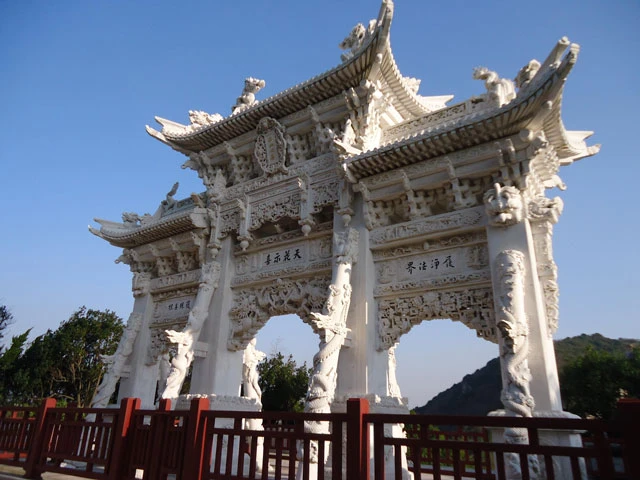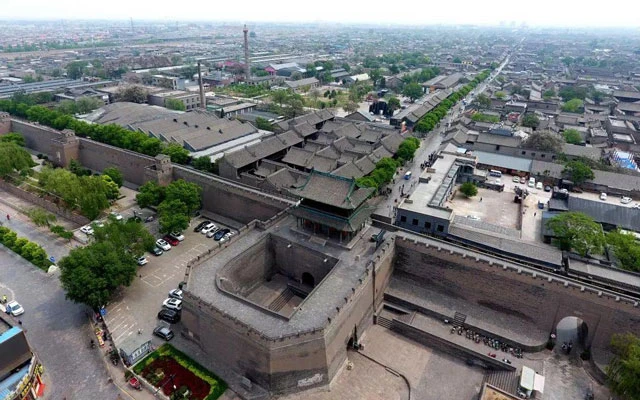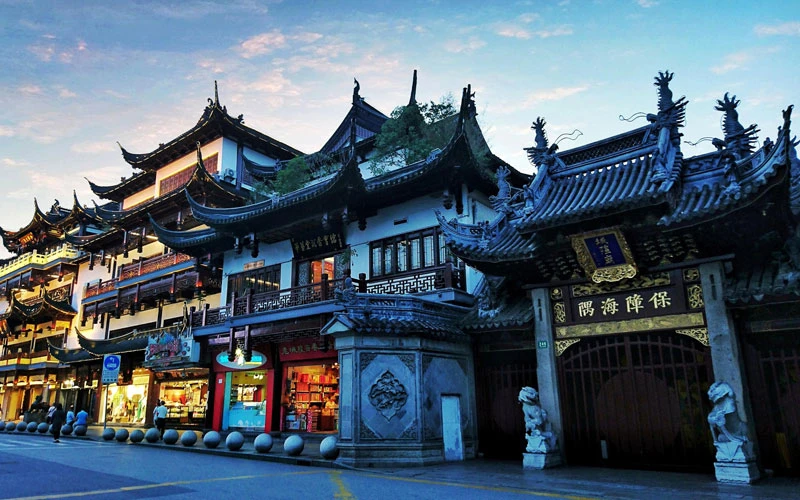The Chinese have used the same architectural model for their imperial and religious buildings for more than two thousand years. It consists of three elements: a platform, a framework of pillars and beams, and non-load-bearing walls.
The buildings usually incorporate the main gate, rectangular enclosures or courtyards, and a series of pavilions arranged in a line and facing north. Almost all buildings were constructed of wood, but due to vulnerability to fire very few survive; the oldest date from the Tang period. Here are some representative Chinese architectures.
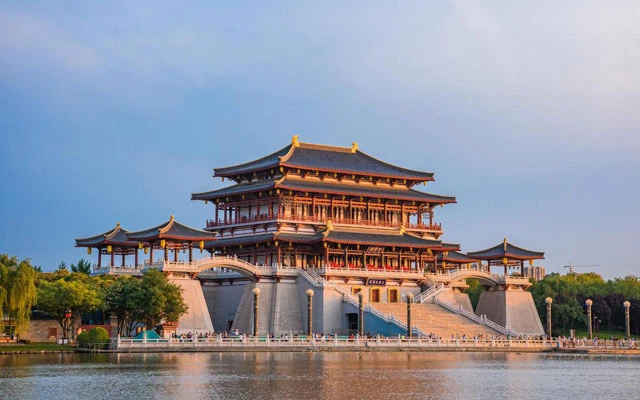
Pavilions
The structure of the pavilions is always the same. They consist of a platform of rammed earth or stone and a grid of wooden pillars. The front part always incorporates an odd number of intercolumns. The meeting of pillars and beams is fixed with brackets (dougong), which support the structure and allow for overhanging roofs. The wood is lacquered in intense tones, and the roofs are curved, of tile or thatch.
Plant building and plant pavilion
Even before pagodas, multi-storey buildings (lou) were built in China, ranging from two-storey private residences to towering gazebos. The plant pavilions (ge) were used for storage and had only doors and windows at the front. These buildings incorporated the usual three elements: base, pillars, and non-load-bearing walls. Plant pavilions were used to store important items, such as libraries of Buddhist sutras or colossal statues like Puning Si in Chengde.

Puning Si
Pagoda
The pagoda or ta is inspired by the Indian stupa and began to develop with the advent of Buddhism in the 1st century AD. Pagodas, with their multiple storeys, were often erected in Buddhist temple complexes (later built outside of them), with the purpose of housing a religious statue.
They were made of brick, stone or wood. The pagoda, an archetypal element of Chinese architecture, originated as a concept and form in India from the Buddhist stupa. But Chinese architectural traditions and styles were soon incorporated into pagodas as well, as can be seen in the pillar pagodas of the Yungang caves, with their multiple heights. Over 1,500 years, pagodas developed an incredible variety of forms, from pillars to flattened tombs to tall multi-story towers.
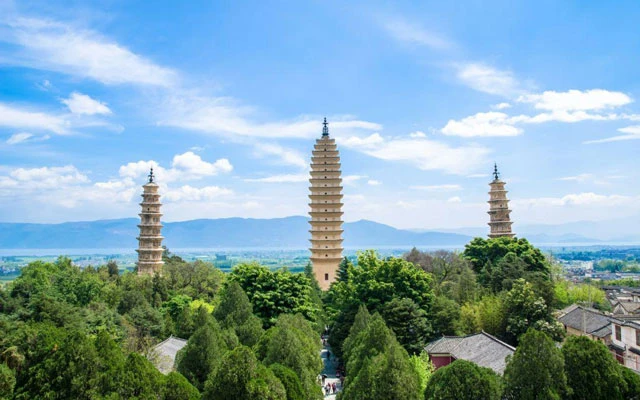
Dali pagoda
They were built of stone, brick, or wood and could be square or multi-sided. When they became typical Chinese buildings, their function changed slightly. Their central role in the temple was taken over by the much more functional pavilion. The feng shui provided the construction of pagodas without temples in the mountains on the outskirts of the cities or next to the rivers, to bring good luck or to avoid floods. The Hindu stupa was a symbolic tomb and receptacle for Buddhist relics that inspired the birth of the Chinese pagoda. But the stupa did not gain strength until the 13th century, when the Yuan imported Tibetan Buddhist stupas (also known as dagobas) and made this architecture popular for later dynasties.
The Dali pagoda is a beautiful example of a pagoda with closely spaced stone eaves. It is square in plan and has a top in the shape of a lotus flower bud. The wooden pagoda of the Fogong Si of Yingxian is one of the most delicate remains. This octagonal building dates from 1056 and is called Sakyamuni pagoda.
Ornamental arch
The pailou or paifang is an arch of wood, brick or stone, sometimes tiled with glazed tiles. It is often inscribed with information about its construction. Pailou were erected at crossroads, temples, bridges, government offices, parks, and tombs.
Defensive walls
The first walls were made of earth, which was crushed and hardened with mallets or moistened to obtain mud and pressed against reed mats. Later brick was used. City walls were usually square, with the main gate to the south. The word for city, cheng, also means wall. Pingyao wall, made of rammed earth and brick and 10 meters high, towers and rampart provided an effective defense. It dates from the Ming period, but part of it has collapsed recently.
Architectural details
The interpretation of detail in Chinese architecture is very interesting. The use of yellow tiles, for example, was reserved for the emperor. The Nine Dragons, present in the Forbidden City and elsewhere, are also imperial: the dragon is a symbol of yang, the masculine principle, and by extension, the emperor.
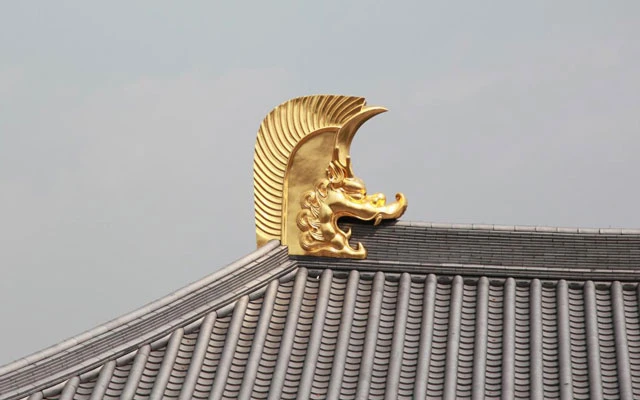
Chiwen (鸱吻)
The chiwen, a bird capable of extinguishing fire with water, appears on the ends of the roofs as protection against fire. The bracket (dougong) transmits the weight of the roof to the pillar. It is a complex constructive and ornamental element that does not carry nails. It fixes the structure of tall buildings, such as the Yellow Crane Pavilion in Wuhan.
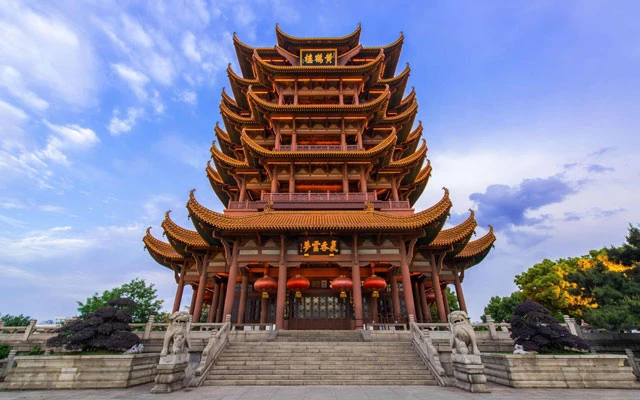
Yellow Crane Pavilion
More on cities and architecture in China:

